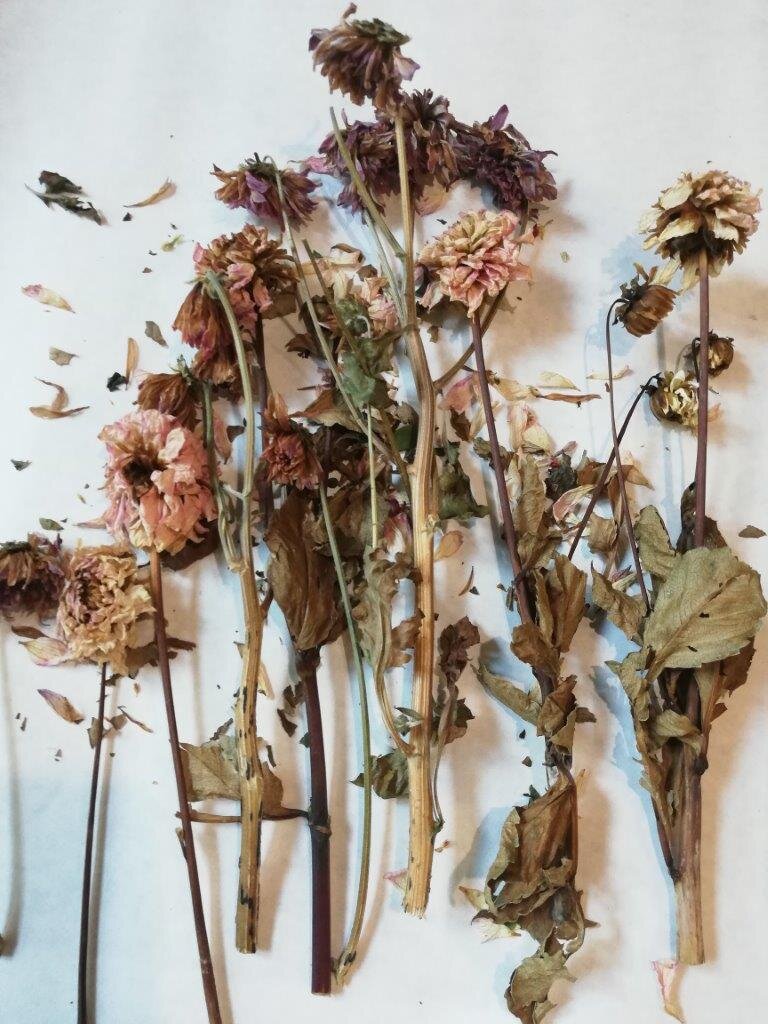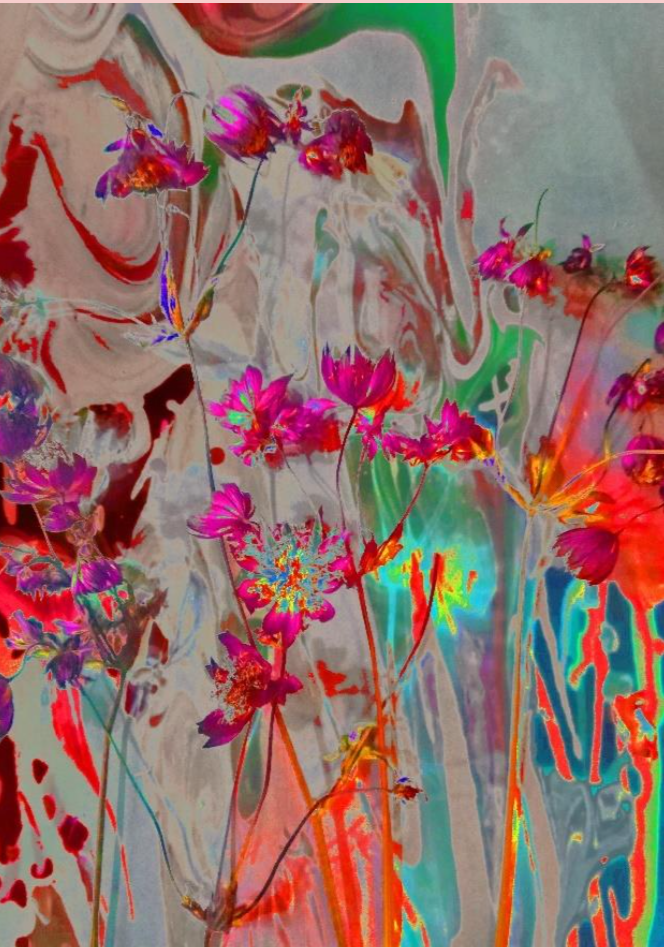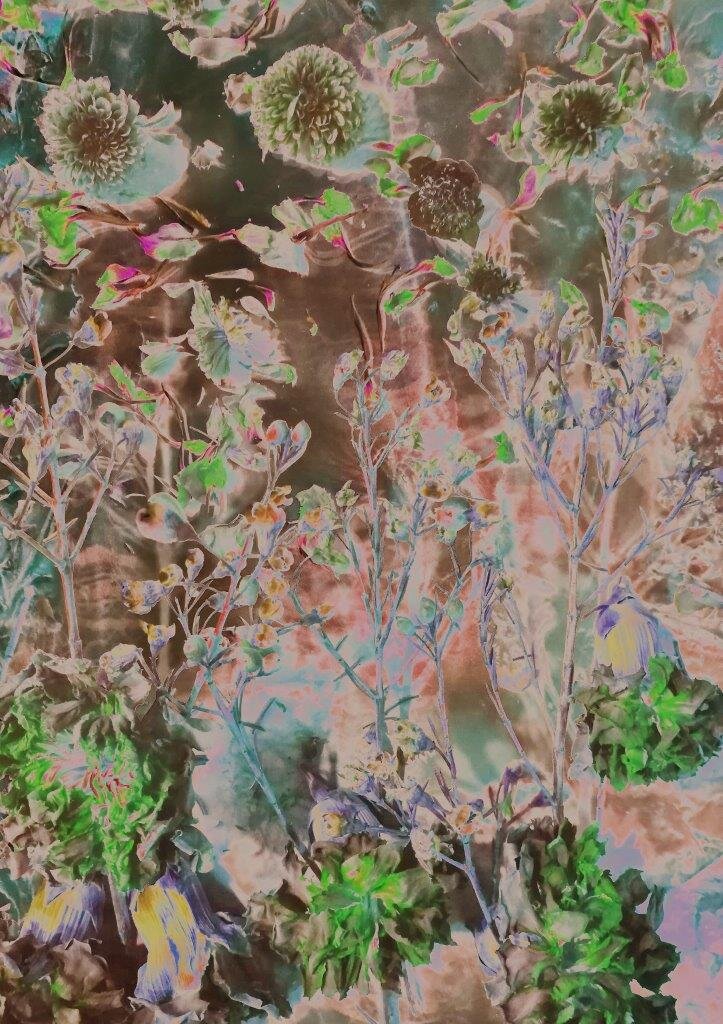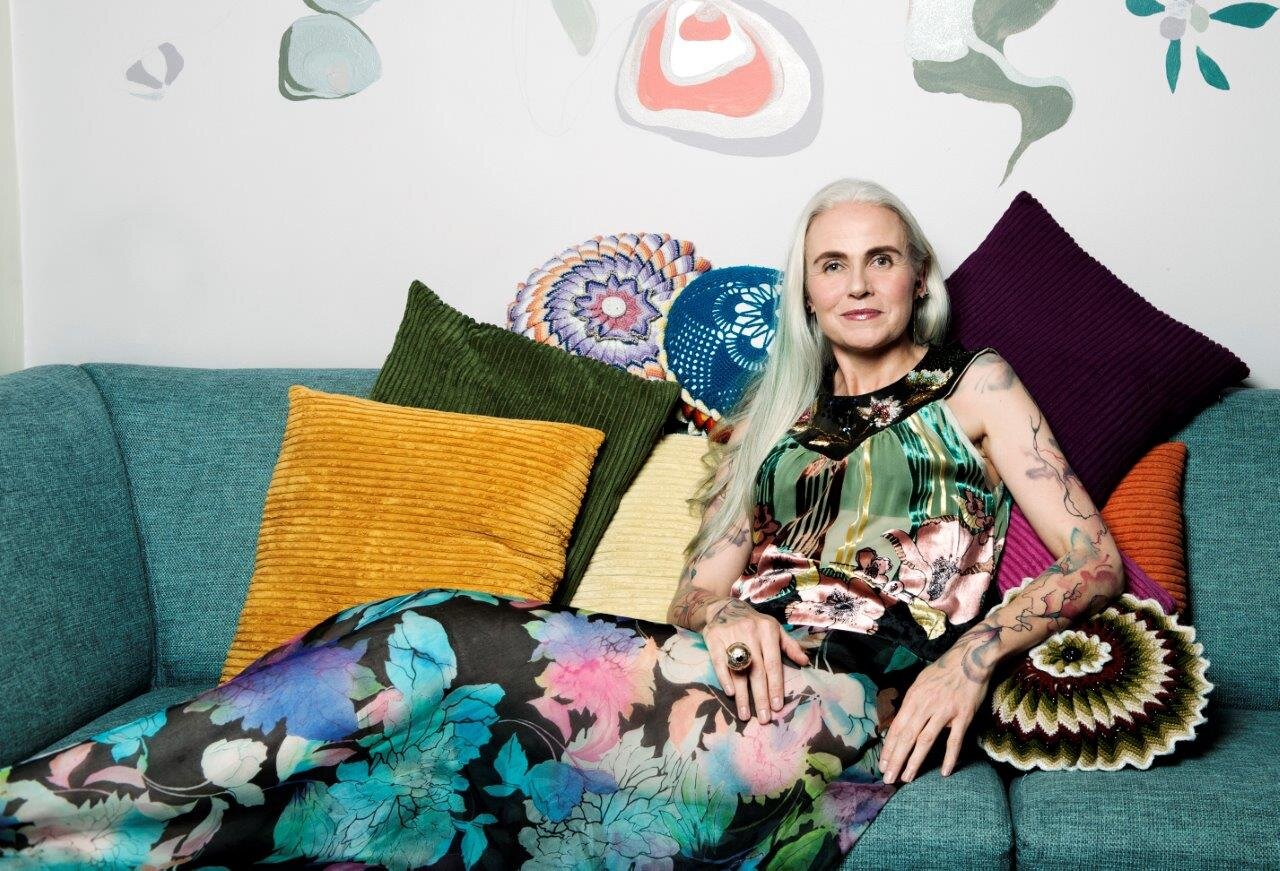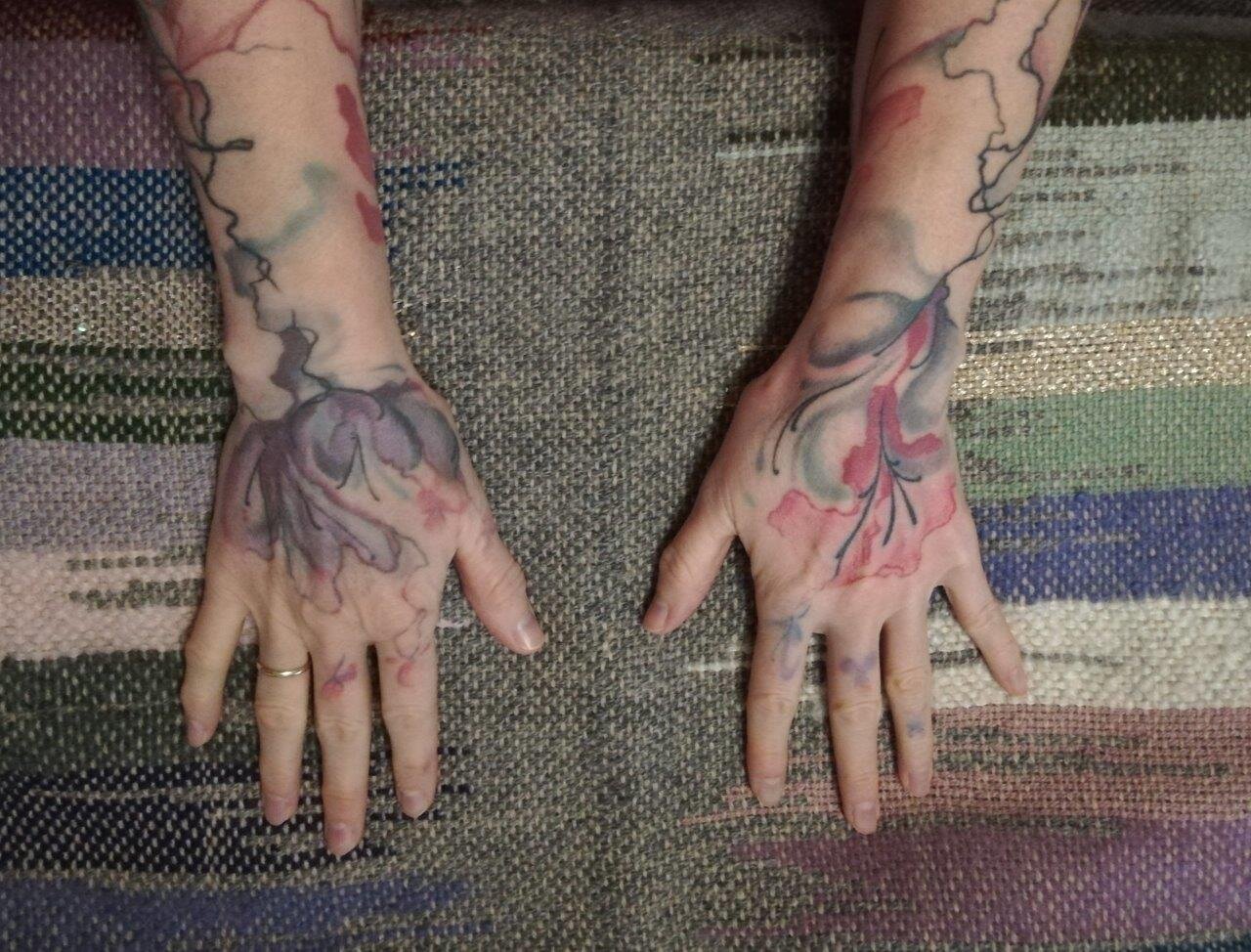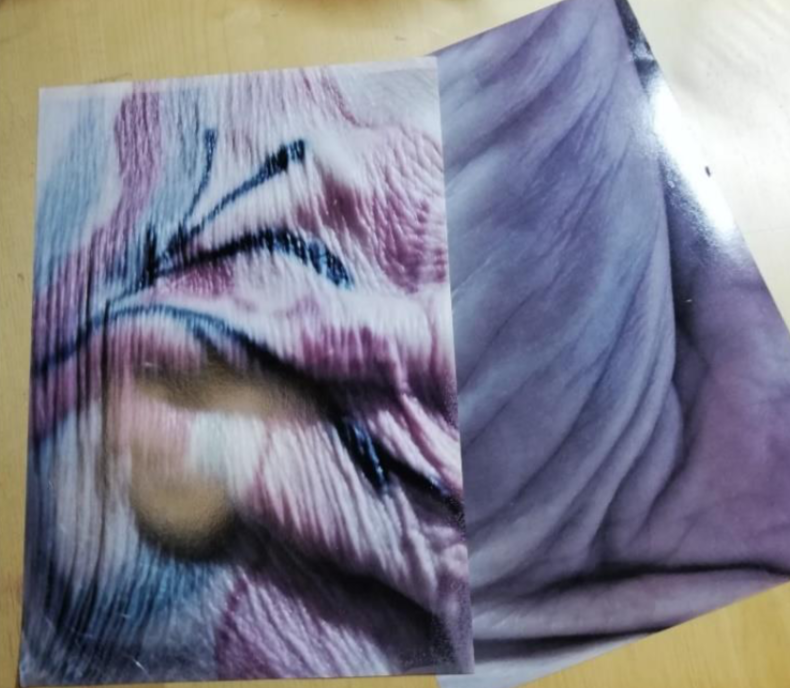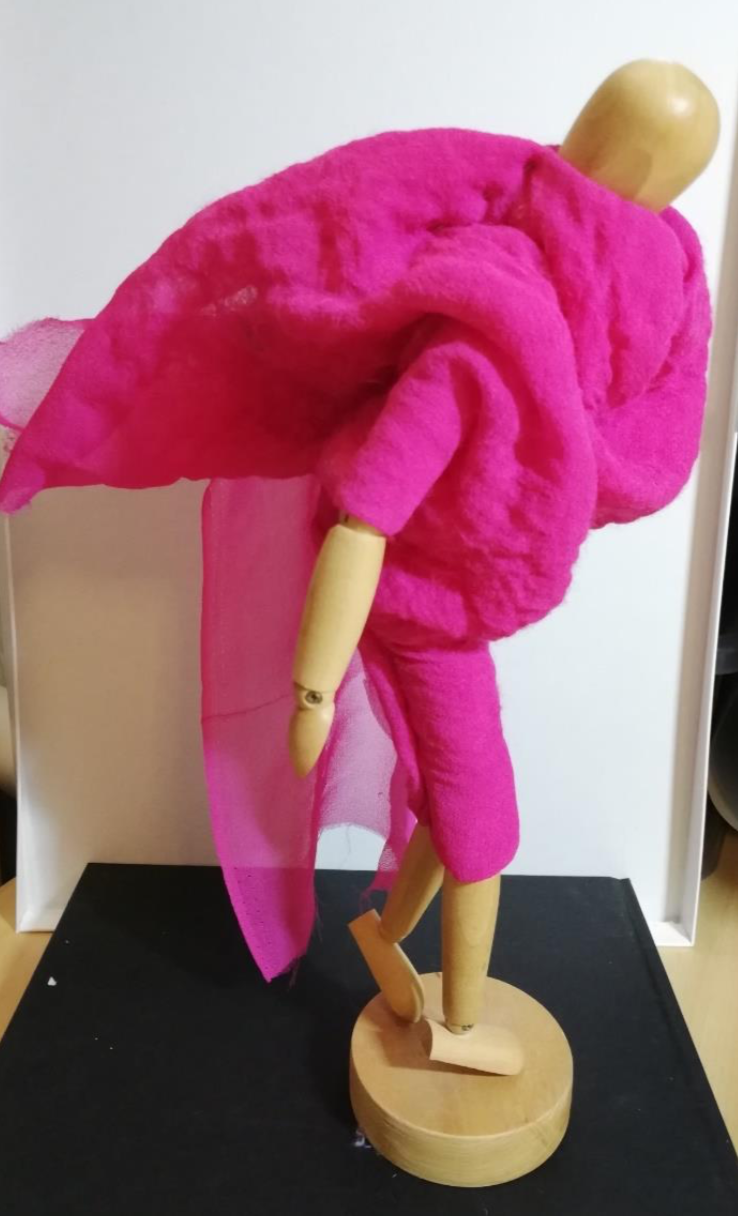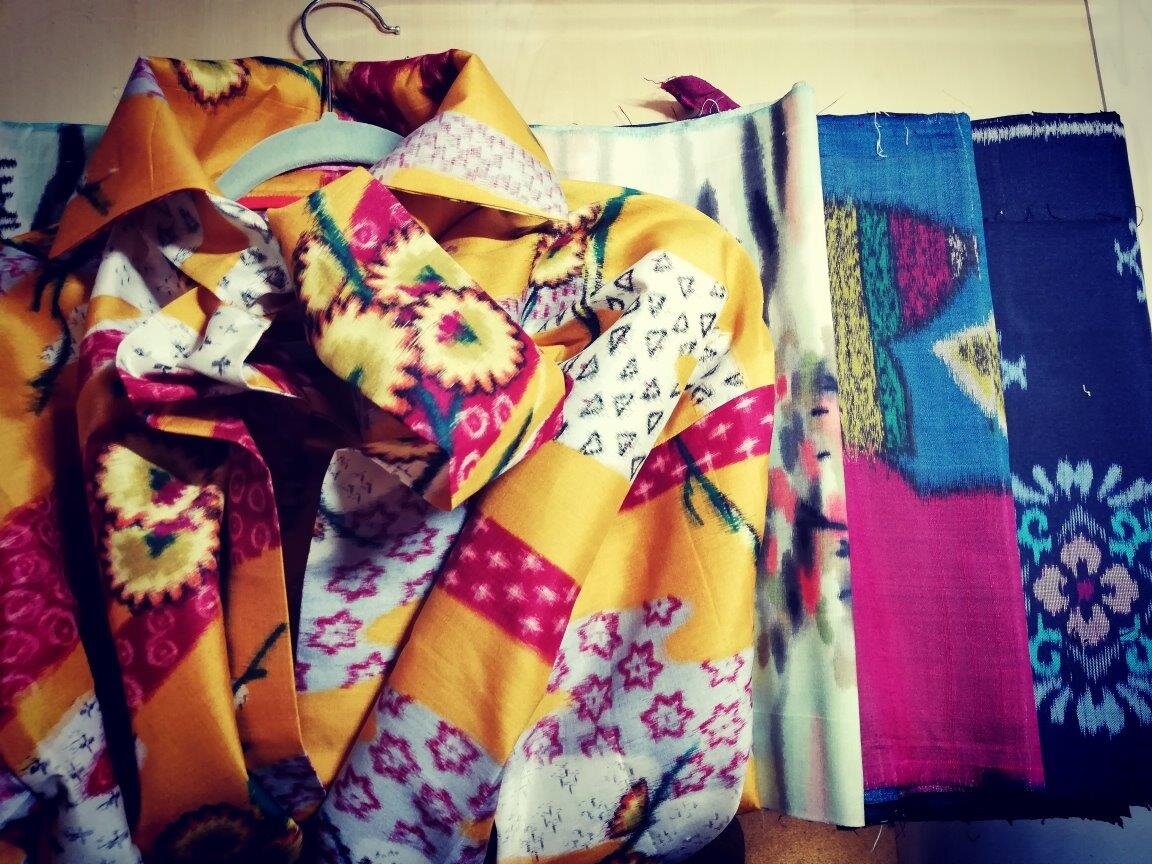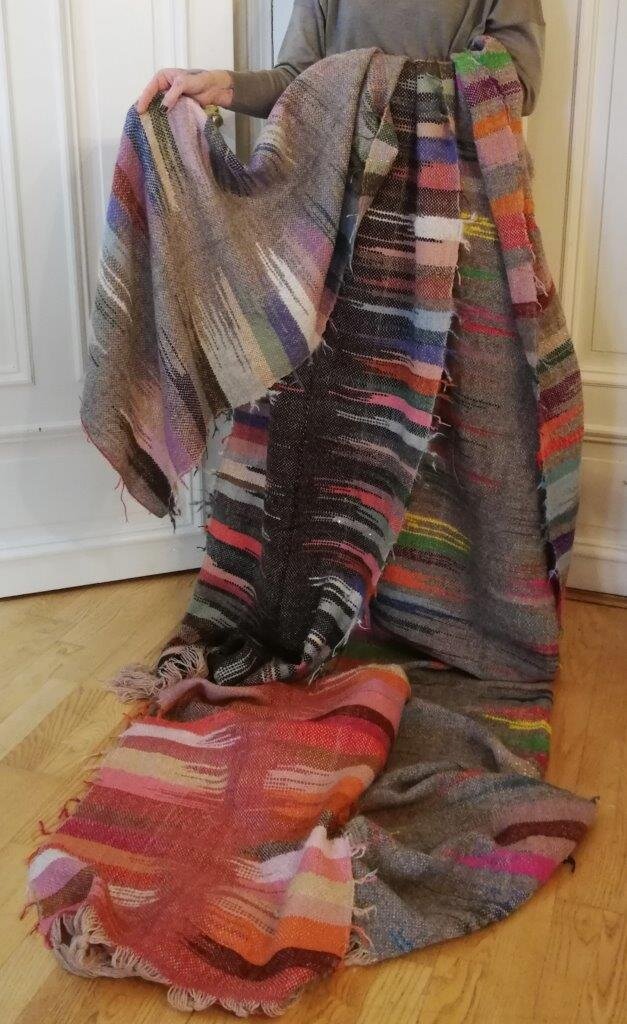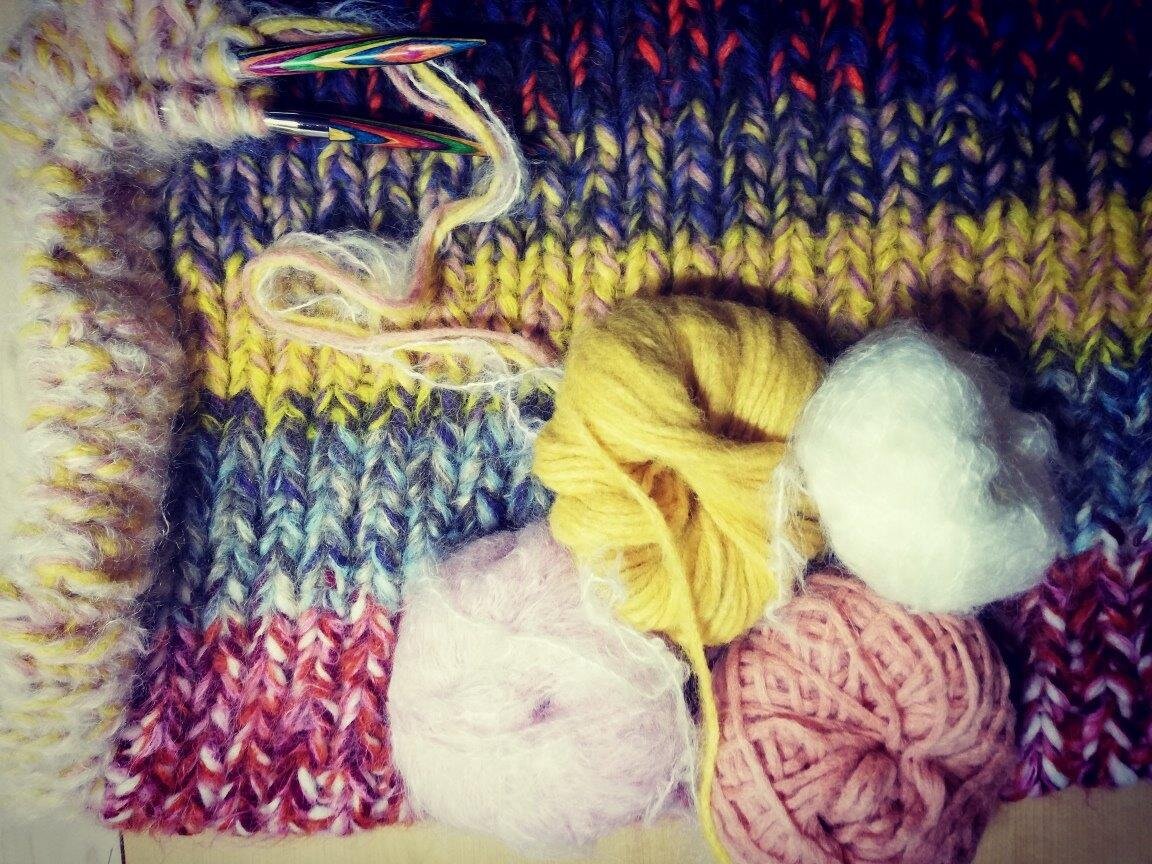Find your inner brave self
I prefer imperfections in the materials, as they add to the history of the final product. I have a deep admiration for the irregular, the unexpected, and the sometimes plain ugly
Tina Haagensen, Norwegian fashion designer (@ Xenia Villafranca)
My high school in the outskirts of Milan was located in a dismissed mental hospital and it still retained the hospital look. Brown walls, aluminum framed windows, an anonymous façade, and an even more anonymous concierge overlooking the square. Sometimes, while exercising in its extensive gardens, we could spot in the distance one of the few remaining patients, walking slowly next to a figure in a white coat towards the entrance of a yellow-polenta neoclassical building with high gray arches, the most ancient heart of the facility. On the ground floor of the school, on the left hand side of a dark corridor, there was a tiny library with red metal shelves. We needed to ask our teachers permission to visit it, since it was opened during class time only. On one of those dull November days, when the gray and the dampness weighed down unbearably on my sixteen-year-old heart, I was browsing the aisles of the library with its worn-out brown terrazzo floor. Sitting on a shelf at my eye level, an old book with a clover-green fabric cover caught my attention. I picked it up. I felt its coarse fiber under my fingers. Imprinted in golden letters in the center of the cover, the title All Quiet on the Western Front by Erich Maria Remarque echoed my feeling of stagnation. It took a handful of pages before Paul Bäumer (the protagonist) and I became one single person. In a muddy trench, I shivered with him. During his leave, I shared the pain of his muteness sitting by his dying mother. But then spring returned and summer followed with its repertoire of ice creams, sun cream, sleeveless dresses, newly-minted friendships, and the occasional swim at night in the sea.
High school had been sitting in the “done” file for a few years, when I got an invitation to a mountain hike in the Dolomites. A friend of mine had a holiday house there. On a July morning, the three of us drove from Milan in a silver car full of laugher. We reached our path and began our ascent through a silent forest filled with a resinous scent, our shoes sinking gently into a carpet of dry pine needles. We planned to spend the night in a mountain hut. When we woke up the following day, the sky was milky-white and the temperature had dropped. One of my friends asked: “What shall we do?” and I gave him the most foolish reply: “We planned to go, so let’s go.” Instead of descending to the valley and returning to our car, the most sensible option, we began to climb.
Gradually, the vegetation gave way to rocks. At first, we were walking on a wide path where a metal inscription read “Welcome to the Great War trail.” Soon the path turned into a thin passage amongst boulders. Here and there, metal chains offered us support while walking along the cliff. Clouds reduced our visibility and we found ourselves crossing on natural bridges on the precipice. Then it began to rain. Our chatting stopped and my teeth chattered. Beaten by wind and rain, we reached the plateau and tried to make sense of our position on the map. My friends discovered a man-made gallery that dove deep into the mountain’s body, and we found shelter inside. I took a couple of steps following them and, in a flash, the tunnel appeared to me as a black and white picture, with WWI soldiers laying in beds, looking at the camera with empty eyes and long beards. I walked outside. Soaking wet and shivering, I overlooked a bare landscape of rocks and rocks only, when the voice of Remarque echoed in my mind: “The wind plays with our hair; it plays with our words and thoughts (…) In the midst of the glowing, red field-poppies, we could go on like this forever.”
In getting to know Tina Haagensen, that particular episode resurfaces from my memory along with this question: what makes us capable of finding beauty in any situation? Tina is an Oslo-based fashion designer who, at the age of 52, returned to university for a MA at Oslo National Academy of the Arts. She is writing a thesis about the role of fashion and styling in female aging and that’s how we got in touch. But Tina is most of all a creative who walks the talk. When during a dinner in Tuscany somebody at the table observed that her tattooed hands would get wrinkled and end up in a patch of colors, she didn’t brush the comment off. On the contrary, she used it as an insight and transformed the image of her hands into a work of art. Her tactile approach to the materials is deeply inspiring. The originality of her work (There’s a gallery at the bottom of the page) is an invitation to think more deeply and broadly about the interweaving of fashion, self-representation and ageism.
You created a fabric by imagining the aging process of your tattooed hands. You transformed something people would hide into a form of art. Can you tell us more about this fabric and what use you’re making thereof?
My experience is that every time we take notice of something, or become deeply interested in something, we suddenly see the subtle connection amongst things. I got my tattoos after the age of 50, and the layout and colors resemble subtle, decaying flowers, which people has commented on. It rather fits an aging skin, like potpourri. Two of my hobbies are photography and forest bathing, which in combination often result in new ideas for fabric prints. Spending time in nature all-year long, being aware of the changes in lights, colors and texture determine the result.
For one of my series of prints in particular, I pictured a winter day in the woods; everything was dead and withered, colorless. It resembled my tattoos, and it made me think of aging, and how I could give it new life by bringing the idea to the excess through digital manipulation of the motifs. The result is almost an artificial version of the natural one, with manic coloring. One can discuss whether one finds it beautiful or not, but it is some sort of masking and camouflaging the same way as we mask with make-up, hair color and the like, when the surface is colorless.
I played with the scaling of the prints, too. The thin, small straws of the forest became giants. One can stretch, pull, and manipulate most things digitally. Everything ends up unnatural! On the wake of this experience, I have been photographing my own wrinkled skin, with and without the tattoos, and then printed the images onto a large piece of silk. The proportions are blown up and almost blend with the folds and the drape of the fabric. My intention is to use both the flowers and the skin prints for my upcoming collection.
These prints revealed the charm of decaying plants and they stand out as a real work of art. How is aging contributing to the exploration and discovery of new beauty concepts?
I had to turn 52 to apply for another round of education, to free up time to immerse myself in research, and to enjoy the slow work of designing and creating textiles. This process has shifted me towards the value of artisan work and of being an artist. The embodiment of slowly and carefully made materials leans towards something much more meaningful than fashion, and additionally expressing a message I am passionate about, both the content and the visual take place in an important social space. A strong and contemporary message can also help dispel the myth of fashion being superficial nonsense. After all, our visual appearance is the first thing we give to others.
Talking about textures, I am particularly fascinated by your re-discovering of hand-woven fabrics. It seems that they interpret the imperfections and the unexpected turns of life better than industrially produced fabric. Do you agree?
In my design practice, my main interest is materiality, and due to my longstanding experience as a seller and buyer in a textile department store, I have gained knowledge of all the elements of fabrics: function, appearance, grip, fibers, thickness, textures, weaving, surface, colors, prints, embellishments, draping ability, bodily feeling, and building of structure through fusing and lining. In my profession as a fashion designer, time often works against me and I must source ready-made textiles, and choose whatever speaks to me esthetically.
Still, I communicate through textiles. Feelings. Intuition. Tactility. Richness. Through my current Master's study, I have slowed down the pace and allowed myself to spend time developing my own materials. I have learned about weaving and picked up knitting and embroidery and researched the process between analogue and digital results. I often experiment with a mix of tools to create different expressions, even though the starting point is the same in motif, the same yarn, or the same colors. The irregular surface versus smooth perfection.
Although I am deeply fascinated by beauty and sometimes completely obsessed by it (I often refer to Aschenbach’s obsession for the young Tadzio, in Death in Venice), I do welcome and prefer imperfections in the materials, as it adds to the history of the final product. I have a deep admiration for the irregular, unexpected and sometimes plain ugly (then again; beauty is in the eye of the beholder!). I always need to add that strange, little something - the inexplicable – into my design, I do not want it to look too pretty. Maybe, subconsciously, it is a form of protest as well. Paul Gauguin said something that deeply resonates with me: "Le laid ça peut devenir beau, le joli jamais! - The ugly can become beautiful, the pretty, never!”
Subliminally, the fashion industry is feeding ageism with its out-with-the-old-in-with-the-new approach. Isn’t it time to question these diktats?
I find that ageism is a comprehensive subject, as it is related to significant issues in society such as feminism, gender ,and race, but I am careful not pinning one form of discrimination to another. Exploring this immense problem has led me to a deeper understanding, and I have gained valuable awareness of the many issues related to aging in the fashion and clothing industry. It has motivated me to investigate the possibility of creating a platform to address ageism in fashion, and a desire to be an active voice in the public space, involving myself as well as my design. I also discovered that despite this complex subject, it is not always relevant for everybody. For instance, the younger generation I approached was generally not familiar - intellectually or physically - with the issues of ageism.
Today, everything is accelerated. Advertising creates artificial needs; we buy and throw away at high speed. This way, we lose grip with values. Not values as money, but memories, feelings, quality, competence, and knowledge. Even old belongings seem to be more valuable than old people! We embrace ancient cultures’ philosophies, old handcraft techniques! Might it be because dead objects are easier to relate to than old living individuals? To me, it is also a question of sustainability. Treating people like disposable waste, due to aging. Just like a shirt you do not want to use anymore and toss out. A rather radical thought, but if we envision these images, we might realize the madness in this scenario.
We are beginning to learn about of the polluting effects of fast fashion. Let us imagine a fashion that resembled life more, allowing for reinvention, mixing, recreation, playfulness, just like when you give new life to vintage Japanese silk kimonos. Would this be a way to envision a greener future for the fashion industry, the planet, and a more inclusive idea of fashion?
The democratization of fashion brings along the problem of fast fashion, with mindless shopping as an outcome. This goes for all ages, but maybe mature and older shoppers are particularly vulnerable, not finding a style that resonates with “their new look.” Considering the endless quantities of vintage clothing, there is basically no reason for buying anything new. As a designer, I reflect upon this issue. Upcycling and customizing existing garments could be a solution. Professor Theo Barth at the Academy said to me: “You are upcycling aging people, not only old fabrics.” I find that brilliant!
Upcycling is a central element of my design, and the combination of luxurious fabrics mixed with vintage and dead stock materials. I’m largely utilizing vintage kimono fabrics in conjunction with my own personally designed fabrics. The garments are locally produced and require hours of hands-on artisanal work; a bespoke piece by Tina Haagensen is intended to be cherished and worn for life as opposed to something replaceable. Being in conversation with the customer is also an essential part, allowing personal services like fittings, alterations, and repair to ensure the integrity and longevity of each piece.
Have you ever heard of “Redesign Parties?” I particularly like this concept, built around a group of women and a rack of hand-picked vintage clothes, sewing equipment, and haberdashery. Apart from being fun, this type of event can introduce a sustainable business model to people interested in fashion. It can be enriched with classes where participants bring their old clothes and get professional help to alter them. Even for those who do not participate to this type of events, I think that the most sustainable way of dressing is to go shopping in our own wardrobes, and find a way to use the garments we own in new ways.
To what extent can fashion take the changing body and its needs into account? Only Pigiama Palazzo comes to my mind…
Here, I am torn because I am questioning whether we should “mask” the body in garments. At the same time, we want to present ourselves to the world putting our best foot forward; we want to make a good impression. As a designer, I am interested in looking into garments which contain a structure and volume where body forms and “flaws” are over-exaggerated. This will obviously look stylish and cool on a young, slim figure, but very differently on an elderly body. How would we look at clothes that build on top of these “flaws” that are already there, which we normally camouflage? Is magnifying flaws a more honest way of counteracting ageism, without hiding the obvious?
What happens when fabrics imitate sagging and wrinkled skin, when drapery imitates folds and flab, and the garment’s structure imitates hunchbacks and forward-leaning, crooked shoulders? Will we perceive it as almost grotesque and monstrous, and even disgraceful, seeing an older person wearing exaggerated constructions, emphasizing a body crooked by age? Will we loathe the sight, simply due to the sight of it, or perhaps because of our fear of the inescapable ticking clock towards our own decay, and end?
Amongst the ageist industries, fashion tops the list. But it’s not just the inability to address the needs of older generations, it is how much the ideas of flawless, youthful and perfection are embedded in any aspect of the business. What do you think?
I’m interested in society’s reactions towards aging people who make a riot and dress “inappropriate”, exposing old and wrinkling skin in skimpy outfits, colors, and shiny decorations. It is common to point fingers towards women not “dressing their age”, those who are claiming space and showing their identity through dress, who dare to think outside the box without being dictated by society. I think all women should be able to express their style, whatever way they want. People have different views on how to present themselves to the world, whether it means being seen and heard through an eccentric and flamboyant approach, feeling confident in showing off body and skin, or to cover up and appear modest.
I have never been afraid of trying out new ways of dressing, or new ways of making. I guess it comes from my upbringing. I was the last of four children, a very active one but mostly by myself. My fondest memories are related to exploring and creating objects with my hands, drawing, using modeling clay and paste, playing with grandma’s old kimonos and gowns in the attic, making dolls clothes, houses and cars out of cardboard boxes, making my own dolls and creating stories. All these beautiful objects and moods were magnetic, and in that world, I found my place. Growing into my teens, I spent most of my time focusing on my appearance. A way of playing and exploring the endless possibilities of characters.
I am not sure if it was an armor to protect my privacy, or if it was an attempt to strengthen my personality. I explored materials and put together outfits from my family’s wardrobes, old fabrics and curtains, flea market finds, and hand-me-down garments; everything was an occasion for remaking. I had a clear idea how I wanted to look, and frequently made complete changes. I felt an immense satisfaction of dressing up, but people reacted to my looks with amazement, confusion, ridicule, and teasing. People could not understand what I was trying to convey. It gave me some sense of rush, a feeling of power as if I was ahead of the ignorance. In turn, this led to an almost over-exaggerated self-image. I was tough on the outside, but a deep soreness developed for not being understood for my artistic expression. In 2007, I became runner up in the reality television series Norwegian Project Runway, and due to my flamboyant look and – then – sapphire blue hair, I learned how little it takes before a young adult woman with a colorful appearance gets attention, both from the media and on social platforms - something that went on for over two years after the program series.
Now, in my 50’s, I still dress “outside the box”, but I notice that their reactions have changed. The comments are far more positive, even though my design is a sort of “catharsis,” filled to the brim with strong visual impressions - provocative, chaotic, and loud - that can release sudden emotions. I am definitely still sticking out from the crowd! My impression is that mature women are not very comfortable in dressing too conspicuously. I sometimes wonder what it will take for women to find their inner brave girl, and dress for themselves, and not the society’s expectations.
A fashion that, in order to dress the aging bodies, tries to conceal aging plays in the hands of ageism and sexism. Can opening to different cultures and styles contribute to a more inclusive and creative fashion landscape?
For me, ageism found its way through maximalism, which is my own visual language, and a strong protest towards society's dictation of dress and age. We tend to shy away from too loud garments, in fear of what others might think and say. I want to challenge the way we think about clothes, and the need humans have to place others inside “the box.” How do we use fashion as a means of communication? And how will people react upon visual appearances outside “the standard?” The definition of "normal" is conforming to the usual and expected, while abnormal is described as weird, bizarre, and different. But who decides what defines “dressing normal?” Clothes are a powerful tool of self-expression, but can also help you escape your current reality. Playing dress-up is associated with childhood, laughter, fun, and freedom – those things that are good for us! I want to emphasize the joy of dressing-up. It’s a form of escapism. People need to play, and fashion is like “The Daily Theater.” Clothes are central to how we present ourselves, and fashion outside the norm can be a comment to a uniforming society, a provocative, powerful tool to show individualism.
I’m interested in where we draw the line on the traditional concept of beauty, and where it becomes excessive and over the top, pushing beauty and taste into the unrefined and gaudy. Even so, I believe there is value and beauty of its own in becoming a character, in building an identity, a persona through self-expression – even in defiance of what is commonly regarded as decent and neat. In every city, there are “originals,” people who follow their own pace and do not look to society for answers, as they have a greater focus on their own lives than everyone else's; people who do not ask for other people’s opinion, but are completely at ease with themselves. They are the opposite of the great mass, the norm, and they never cease to fascinate us, yet they get rejected due to their “weirdness.”
I want to be a contributing voice for acceptance. We must look beyond our own group and understand that people are different and live in different ways around the world. I have been collecting vintage Kimonos for many years, and for the past ten years I upcycled these beautiful fabrics into new garments. My grandmother went to Japan when she was young and she brought these traditional garments home with her. As a child, I could sit for hours admiring the soft silk and the intricate embroideries. This esthetic has probably stayed within me. However, I am sensitive to using them, and being in conversation with people in Japan, I have gotten to know the history. The work behind these fabrics is priceless, and of profound interest for a craftsman as myself.
Opening up to different cultures and styles, as a “cultural collage” is absolutely interesting, but there’s a fine line between celebration and appropriation. The problem arises when there is a bias in power relations, where people profit from picking elements from a historically oppressed group, "stealing” traditional knowledge or cultural expressions without permission, and reducing ethnic groups to trends. Fashion is not new in this arena. It happened and it didn’t give anything in return or didn’t facilitate cultural exchange and cooperation. Being sensitive and respectful to these matters is important as well as to acquire knowledge through research and history.
Older models began to appear in some ads, but I haven’t noticed any change in the offer. Do we have to be aware of grey-washing?
I believe it is a devious form of PR, when placing one stand-out aging model among several young people in advertising campaigns. I get confused, and I ask to whom the companies are aiming. Is it an alibi for political correctness, or a genuine wish for a more diverse customer group? People interested in fashion will probably “get it” and be inspired, but the larger group who do not see themselves as fashionable might not identify with these images.
If the fashion industry truly wants to embrace aging, I think it should find more opportunities to celebrate the beauty of the aging bodies. What is your take?
While we observe the physical decay in natural aging, such as loss of color, greying of hair, wrinkles, sagging skin, and smooth contours, we are not necessarily in agreement with our biological age on a psychological level. There are expectations connected to clothes, and about how we visually present ourselves to the world, that will do something for our self-esteem, self-confidence, and self-image. Is there a difference between wanting to feel comfortable and confident in your body, regardless of age, compared to deliberately trying to achieve a more youthful look? Is attitude towards age, considering norms, traditions, codes, and rules, what is holding us back? Are we afraid of embarrassment? What is it that prevents mature women from being fully confident in themselves, visible, and claiming their rightful space? What does it take to break through?
Society's view on older people’s dress is rather limited. When we age, trends take the backseat in favor of personal style. Some go flamboyant, but the majority goes beige and grey, decent and classic, not being in anyone's way. Except for the most robust individualists, few of us want to move too far away from the herd. By emphasizing our personality in the way we dress, clothes are an amplifier of what we stand for, through what we chose to wear. Clothes can communicate specific values because fashion, as part of our culture, is a form of language. They can also communicate with us: the emotional connection we have with a certain garment, how it “speaks” to us, and how it makes us feel when we wear it. After all, garments can help us to emphasize our identity, to assess the question of who am I now and, in the end, to bring forward “the next me.”
From top left to right: dried flowers and digital floral prints; Tina Haagensen (@Xenia Villafranca); tattooed hands; silk print inspired by tattooed hands; study of garment that emphasizes body forms and “flaws;” kimono fabric for upcycling; jacket from upcycled kimono; wool from loom and knitting

